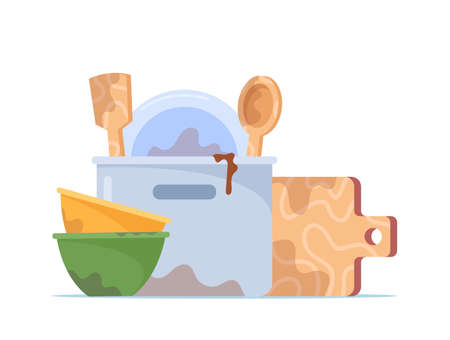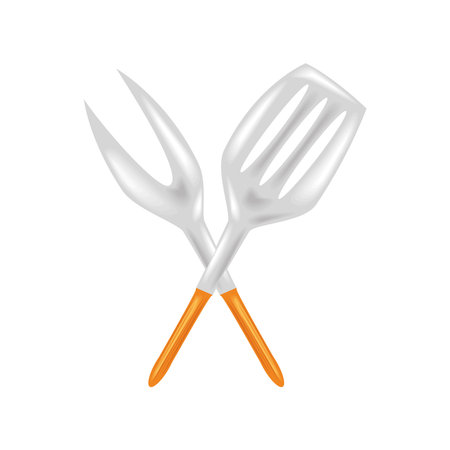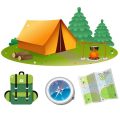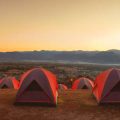1. Planning Ahead: Meal Prep for a Crowd
When organizing meals for a large camping group, the key to success is planning ahead. Whether youre heading out with family, friends, or a scout troop, prepping meals in advance can save you time, reduce stress, and make sure everyone stays well-fed and happy.
Consider Group Size and Dietary Needs
Start by getting a headcount of how many people are going. Be sure to ask about any dietary restrictions like vegetarian, gluten-free, or food allergies. It’s also helpful to gather meal preferences so you’re not stuck with food no one wants to eat.
Sample Group Overview Table
| Name | Dietary Restriction | Meal Preference |
|---|---|---|
| Alice | Vegetarian | Loves pasta dishes |
| Bob | None | Big meat eater |
| Carlos | Gluten-Free | Enjoys rice-based meals |
| Diana | Nut Allergy | Likes fresh veggies and dips |
Create a Meal Schedule by Day
To stay organized, map out each day’s meals before your trip. Assign specific meals—breakfast, lunch, dinner—to each day. Include snacks too! This helps you make sure there’s enough variety and avoids repeating the same food.
Sample 3-Day Meal Plan Table
| Day | Breakfast | Lunch | Dinner | Snacks/Dessert |
|---|---|---|---|---|
| Friday | Pancakes & Fruit | Deli Sandwiches & Chips | Burgers & Corn on the Cob | S’mores & Trail Mix |
| Saturday | Scrambled Eggs & Toast | Taco Bowls (GF/V options) | Grilled Chicken & Veggies | Granola Bars & Popcorn |
| Sunday | Muffins & Yogurt Parfaits | Pita Wraps with Hummus/Meat Options | (Departure Day – No Dinner) | Leftover Snacks for Travel Home |
Assign Cooking Duties Early On
If you’re camping with adults or older teens, divide up cooking responsibilities ahead of time. You can assign different people or teams to handle certain meals. This way, no one gets burned out and everyone contributes.
Tip:
Create a shared Google Sheet or print out a duty roster that lists who is responsible for each meal. This keeps things fair and clear.
Aim for Easy and Crowd-Friendly Recipes
Stick to simple recipes that can be scaled up easily. Think one-pot meals like chili, pasta, or stir-fry. Pre-chop veggies at home and pack ingredients in labeled bags or containers so they’re ready to go when it’s time to cook.
Pro Tip:
Avoid meals that require lots of last-minute prep or long cooking times. The more you can do ahead of time, the better your camp kitchen experience will be!
Planning ahead helps create a smooth and fun mealtime experience for everyone in your camping group. With just a bit of organization before your trip, you’ll spend less time stressing over food and more time enjoying the great outdoors.
2. Dividing Duties and Creating a Cooking Schedule
When camping with a large group, keeping things organized is key—especially when it comes to food. One of the best ways to manage meals and make sure everyone gets fed without overwhelming a few people is to divide responsibilities. Assign campers into cooking and cleanup teams and rotate the duties so everyone pitches in and no one gets stuck doing all the work.
Set Up Cooking and Cleanup Teams
Create teams of 2–4 people depending on your group size. Each team should be responsible for preparing one meal and cleaning up after another. Try to mix experience levels so that someone who knows their way around a camp stove can help those who are newer to camping meals.
Example Team Setup
| Team Name | Members | Meal Prep Responsibility | Cleanup Duty |
|---|---|---|---|
| Team A | Alice, Mike, Sarah | Friday Dinner | Saturday Breakfast |
| Team B | Jason, Emily, Tom | Saturday Breakfast | Saturday Lunch |
| Team C | Katie, Dan, Leo | Saturday Lunch | Saturday Dinner |
| Team D | Nina, Carlos, Jen | Saturday Dinner | Sunday Breakfast |
Create a Rotating Schedule
A rotating schedule keeps things fair and gives everyone a chance to participate in different tasks. You can plan this out before the trip and share it with the group or write it out on a whiteboard or paper at camp for easy reference.
Sample Daily Meal Schedule for a Weekend Trip
| Day/Meal | Cooks (Prep) | Cleanup Crew |
|---|---|---|
| Friday Dinner | Team A | Team D |
| Saturday Breakfast | Team B | Team A |
| Saturday Lunch | Team C | Team B |
| Saturday Dinner | Team D | Team C |
| Sunday Breakfast | (Optional: Group Effort) | (Quick Cleanup: Volunteers) |
Tips for Success
- Create a shared document: Use Google Sheets or an app like Trello to assign roles ahead of time.
- Add fun elements: Let each team come up with a theme or special dish for their meal.
- Praise good work: Give shoutouts during meals to keep morale high and make it more enjoyable.
- Avoid burnout: Keep duties reasonable and include breaks for everyone throughout the trip.
This kind of organization helps the whole group run smoother, ensures every meal is covered, and makes cooking at camp feel more like a team-building activity than a chore. Plus, it frees up more time to enjoy nature together!

3. Packing Smart: Gear and Food Essentials
When youre cooking for a large camping group, smart packing can make all the difference. Having the right gear and knowing how to store your food safely helps avoid stress and keeps everyone well-fed. Heres what you need to know.
Essential Cooking Gear for Large Groups
Cooking for a crowd requires more than just a single campfire and one pan. You’ll want to bring equipment that’s durable, easy to use, and efficient for feeding multiple people. Heres a list of must-have items:
| Gear | Why Its Essential |
|---|---|
| Multiple-burner camp stove | Allows you to cook several dishes at once, saving time |
| Large pots and pans | Perfect for bulk meals like chili, pasta, or stews |
| Coolers with ice packs | Keeps perishable food safe and fresh throughout the trip |
| Prep table or folding table | Makes food prep easier and cleaner in outdoor settings |
| Utensils (tongs, ladles, spatulas) | Necessary for cooking and serving efficiently |
| Reusable plates, bowls, and cutlery | Eco-friendly and cost-effective for large groups |
| Dishwashing station | Keeps things clean and prevents food contamination |
Food Storage Tips
Packing food safely isn’t just about keeping it cold—it’s also about keeping it organized. With multiple meals planned, you’ll want a system that prevents spoilage and makes meal prep easy.
Use Labeled Bins or Bags
Separate dry goods, snacks, breakfast items, and dinner ingredients into clearly labeled containers. This saves time when cooking and helps everyone find what they need without digging through everything.
Create a Cooler Strategy
If you have more than one cooler, designate them by purpose—one for meat, one for dairy, one for drinks. Open drink coolers often so it’s best not to mix them with perishables.
Clever Tip:
Freeze meals ahead of time (like taco meat or pasta sauce) so they act as ice packs while slowly thawing in the cooler.
A Few More Packing Essentials
- Ziploc bags & airtight containers: For leftovers or pre-chopped ingredients.
- Aluminum foil & parchment paper: Great for wrapping food or lining pans.
- Trash bags & paper towels: Clean-up is part of the process—don’t forget them!
- Spices & condiments kit: A small tote with salt, pepper, oil, ketchup, etc., goes a long way.
Packing smart not only keeps your meals running smoothly but also helps avoid waste and keeps your campsite organized. With the right gear and setup, cooking outdoors can be just as fun as eating under the stars.
4. Easy and Crowd-Pleasing Meal Ideas
When youre cooking for a big group at camp, simple and scalable meals are key to keeping everyone happy and well-fed. Think hearty breakfasts, one-pot dinners, and prep-ahead options that make mealtime stress-free. Here are some tried-and-true ideas that work great for large camping groups.
Hearty Bulk Breakfasts
Mornings at camp can be busy, so its smart to go with breakfast dishes you can prepare in large batches. These options are filling, easy to cook over a campfire or stove, and guaranteed to start the day off right:
| Meal | Ingredients | Why It Works |
|---|---|---|
| Breakfast Burritos | Scrambled eggs, cheese, sausage or veggies, tortillas | Easy to make in bulk and wrap up; great for on-the-go mornings |
| Pancake Bar | Pancake mix, syrup, fruit, chocolate chips | Let everyone customize their own stack; cook multiple at once on a griddle |
| Oatmeal Buffet | Rolled oats, hot water or milk, nuts, dried fruit, brown sugar | No-fuss and budget-friendly; serve from one big pot with toppings on the side |
One-Pot & Foil Packet Dinners
Dinner doesn’t have to mean juggling multiple pots and pans. One-pot meals save time and cleanup while still being satisfying. Foil packets are another great option—just toss them on the fire and let them cook while you relax.
Top One-Pot Dinner Ideas:
- Chili: Ground beef or turkey, beans, diced tomatoes, spices—all simmered in one big pot.
- Creamy Pasta: Pasta, canned Alfredo sauce or tomato sauce, pre-cooked chicken or sausage.
- Curry & Rice: Canned coconut milk, curry paste, veggies, and rice cooked together or separately.
Favorite Foil Packet Combos:
- Sausage & Veggies: Sliced smoked sausage with bell peppers, onions, potatoes.
- Lemon Garlic Chicken: Chicken breast with lemon slices, garlic, green beans.
- Taco Packets: Ground beef or beans with taco seasoning, corn, black beans—serve in tortillas.
Make-Ahead Meal Options
If you have access to coolers or RV refrigeration, prepping meals ahead of your trip can save tons of time at camp. Heres what works well when made in advance:
- Casseroles: Pre-baked lasagna or enchiladas that just need reheating over the fire or grill.
- Pasta Salads: Hold up well in coolers and make great sides or light lunches.
- Baked Goods: Muffins, banana bread, granola bars—perfect for snacking anytime.
Pro Tip:
Label all containers with meal names and instructions using masking tape and a Sharpie—makes it easy for anyone in the group to help with cooking!
The key to successful group cooking is keeping things simple but tasty. With a few go-to recipes and some basic planning, youll keep the whole crew fed without spending your entire trip by the stove.
5. Campfire Cooking Tips and Safety
Cooking over a campfire can be one of the most rewarding parts of camping with a large group. It brings everyone together and adds that classic outdoor flavor to your meals. But to keep things safe and efficient, it’s important to follow some key tips on fire safety, heat control, and using the right cooking gear.
Fire Safety First
Before you even light a match, make sure your fire setup is safe:
- Use a designated fire ring or pit: Most campgrounds provide these. If youre in a backcountry area, clear a space free of dry leaves and twigs.
- Keep water or sand nearby: Always have a way to quickly extinguish the fire if needed.
- Never leave the fire unattended: Assign someone to monitor it at all times, especially with kids around.
- Fully extinguish the fire before sleeping or leaving: Stir ashes with water until they’re cold to the touch.
Mastering Temperature Control
You don’t need fancy gear to manage heat, but knowing how to use your fire makes all the difference for meal success:
- Create heat zones: Rake coals into different areas — one for high heat (direct flame), one for medium (hot coals), and one cooler zone for keeping food warm.
- Use a grill grate: Elevating food gives you better control over cooking time and prevents burning.
- Add wood gradually: Avoid big flare-ups by feeding small pieces instead of large logs during cooking.
Best Practices for Cast Iron & Grilling Gear
Cast iron cookware is perfect for campfire meals because its tough and holds heat well. Here’s how to get the best results:
| Equipment | Tips for Use |
|---|---|
| Cast Iron Skillet | Preheat over coals, not flames. Great for eggs, bacon, stir-fries, and pancakes. |
| Dutch Oven | Bury in coals or place hot coals on lid for even baking. Ideal for stews, chili, or cobblers. |
| Grill Rack | Set over rocks or on a stand above coals. Perfect for burgers, hot dogs, or foil packets. |
| Tongs & Heat-Resistant Gloves | Essential tools for safely moving hot pots or rearranging food on the fire. |
Pro Tip:
If you’re cooking for a large group, consider assigning two people as “firemasters.” They’ll stay focused on maintaining the fire and helping others cook efficiently without overcrowding the space.
Keep It Clean
Sooty pots and greasy grates are part of campfire cooking—but cleaning up doesn’t have to be hard. Bring steel wool pads, biodegradable soap, and extra water just for cleanup. Wipe down cast iron with oil after washing to prevent rusting.
A little planning goes a long way when cooking over an open flame. With these tips, you’ll be serving up hot meals safely and deliciously—even with a crowd around the campfire!


